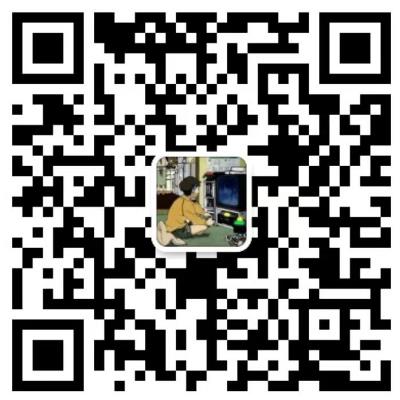
内容简介
《西尔斯当代大学物理(英文版原书12版)(套装共2册)》作为著名的世界经典优秀教材,《西尔斯当代大学物理》自1949年首次出版以来,历经半个多世纪,在物理教育的探索与创新方面一直发挥着先导作用,其许多可圈可点的特色在美国乃至世界其他国家,影响了一代又一代的大学师生,是当今世界发行量最大的主流教材之一。
《西尔斯当代大学物理(英文版原书12版)(套装共2册)》是第12版,它很好地继承了最畅销的第11版不断创新和精心制作的传统,在充分吸收教育研究优秀思想的基础上,它强化了解题指导,并提供先进、形象的概念教学法,系统性很强的习题,被实际教学证明有效和得到广泛应用的教学辅导与作业在线系统。
《西尔斯当代大学物理(英文版原书12版)(套装共2册)》内容丰富、生动,图文并茂,举例鲜活,趣味性强,联系实际密切,强调概念理解,注重能力培养;每章的问题引入法、正文探索式的叙述法以及每节的思考题检测法等多种教学方法并用,能有效调动学生学习的积极性,提高学生的学习效能;原汁原味的英语更能让学生尽享语言学习的美味大餐、
《西尔斯当代大学物理(英文版原书12版)(套装共2册)》的主要特色有:
四步解题法:所有例题都采用四步解题法:审题(Identify)、破题(Set up)、求解(Excute)和讨论(Evaluate),这种规范、科学的解题方式十分有利于学生形成思维清晰、表述准确、方法明确的解题习惯,并能逐步获得较强的解决实际问题的能力。
教学紧随练习:练习包括:采用语言、公式、图片等来巩固物理概念的本章生动总结,采用多项选择和排序的理解测验等。
配有“掌握物理”教学辅导与作业在线系统:该系统内容丰富,除了具有超过1200条的自学材料和章后问题的资料库外,还包括专门针对“解题策略”和“理解测验”的解答.该系统可以在世界范围内为使用《西尔斯当代大学物理(英文版原书12版)(套装共2册)》的师生提供服务。
《西尔斯当代大学物理(英文版原书12版)(套装共2册)》主要内容有力学、波动和声学、热学、电磁学、光学、近代物理学等。
《西尔斯当代大学物理(英文版原书12版)(套装共2册)》为高等学校理工科各专业学生的大学物理双语教学教材,也是广大高校物理教师非常好的教学辅助资源或参考书。
作者简介
Hugh D. Young is Emeritus Professor of Physics at Carnegie Mellon University in Pittsburgh, PA. He attended Carnegie Mellon for both undergraduate and grad-uate study and earned his Ph.D. in fundamental particle theory under the direction of the late Richard Cutkosky. He joined the faculty of Carnegie Mellon in 1956 and has also spent two years as a Visiting Professor at the University of Califomia at Berkeley.
Prof. Young's career has centered entirely around undergraduate education.He has written several undergraduate-level textbooks, and in 1973 he became a co-author with Francis Sears and Mark Zemansky for their well-known introduc-tory texts. With their deaths, he assumed full responsibility for new editions of these books until joined by Prof. Freedman for University Physics.
Prof. Young is an enthusiastic skier, climber, and hiker. He also served for,'sev-eral years as Associate Organist at St. Paul's Cathedral in Pittsburgh, and has played numerous organ recitals in the Pittsburgh area. Prof. Young and his wife Alice usually travel extensively in the summer, especially in Europe and in the desert canyon country of southern Utah.
Roger A. Freedman is a Lecturer in Physics at the University of California,Santa Barbara. Dr. Freedman was an undergraduate at the University of Califor-nia campuses in San Diego and Los Angeles, and did his doctoral research in nuclear theory at Stanford University under the direction of Professor J. Dirk Walecka. He came to UCSB in 1981 after three years teaching and doingresearch at the University of Washington.
At UCSB, Dr. Freedman has taught in both the Department of Physics and the College of Creative Studies, a branch of the university intended for highly gifted and motivated undergraduates. He has published research in nuclear physics, ele-mentary particle physics, and laser physics. In recent years, he has helped to develop computer-based tools for learning introductory physics and astronomy.
When not in the classroom or slaving over a computer, Dr. Freedman can be found either flying (he holds a commercial pilot's license) or driving with his wife, Caroline, in their 1960 Nash Metropolitan convertible.
A. Lewis Ford is Professor of Physics at Texas A&M University. He received a B.A. from Rice University in 1968 and a Ph.D. in chemical physics from the Uni-versity of Texas at Austin in 1972. After a one-year postdoc at Harvard Univer-sity, he joined the Texas A&M physics faculty in 1973 and has been there ever since. Professor Ford's research area is theoretical atomic physics, with a special-ization in atomic collisions. At Texas A&M he has taught a variety of undergrad-uate and graduate courses, but primarily introductory physics.
目录
Mechanics
1. Units, Physical Quantities, and Vectors
2. Motion Along a Straight Line
3. Motion in Two or Three Dimensions
4. Newton's Laws of Motion
5. Applying Newton's Laws
6. Work and Kinetic Energy
7. Potential Energy and Energy Conservation
8. Momentum, Impulse, and Collisions
9. Rotation of Rigid Bodies
10. Dynamics of Rotational Motion
11. Equilibrium and Elasticity
12. Gravitation
13. Periodic Motion
14. Fluid Mechanics
Waves/Acoustics
15. Mechanical Waves
16. Sound and Hearing
Thermodynamics
17. Temperature and Heat
18. Thermal Properties of Matter
19. The First Law of Thermodynamics
20. The Second Law of Thermodynamics
Electromagnetism
21. Electric Charge and Electric Field
22. Gauss's Law
23. Electric Potential
24. Capacitance and Dielectrics
25. Current, Resistance, and Electromotive Force
26. Direct-Current Circuits
27. Magnetic Field and Magnetic Forces
28. Sources of Magnetic Field
29. Electromagnetic Induction
30. Inductance
31. Alternating Current
32. Electromagnetic Waves
Optics
33. The Nature and Propagation of Light
34. Geometric Optics and Optical Instruments
35. Interference
36. Diffraction
Modern Physics
37. Relativity
38. Photons, Electrons, and Atoms
39. The Wave Nature of Particles
40. Quantum Mechanics
41. Atomic Structure
42. Molecules and Condensed Matter
43. Nuclear Physics
44. Particle Physics and Cosmology
⚠️侵权声明:如有侵权请发送邮件至:xiaobing1945@163.com 反馈,我们将尽快处理。
⚠️转载声明:若需转载,请保留原文链接并附出处,谢谢合作。


